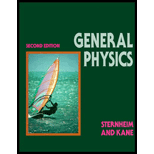
Concept explainers
The idea for composition of atom using Rutherford’s experiment.
Answer to Problem 1RQ
Rutherford experiment led to an idea that the nucleus of the atom is composed of massive positively charged particles surrounded by electrons.
Explanation of Solution
Rutherford experiment shows that maximum alpha particles are scattered with small angle of deviation, some scattering in large angles, and very few are reflected back towards the source from the target when energetic positively charged alpha particles is thrown towards the thin gold foil.
Rutherford explains this incident in a way that the small volume of the target atom is occupied by the positively charged nucleus and the negatively charged electrons occupies rest of the volume of the target.
This led to an idea that the nucleus of the atom is composed of massive positively charged particles surrounded by electrons.
Conclusion:
Therefore, Rutherford experiment led to an idea that the nucleus of the atom is composed of massive positively charged particles surrounded by electrons.
Want to see more full solutions like this?
Chapter 27 Solutions
General Physics, 2nd Edition
- Explain how a hydrogen atom in the ground state (l = 0) can interact magnetically with an external magnetic field.arrow_forward(a) Show that if you assume the average nucleus is spherical with a radius r=r0A1/3, and with a mass at A u, then its density is independent at A. (b) Calculate that density in u/fm3 and kg/m3, and compare your results with those found in Example 31.1 for 56Fe.arrow_forwardA hydrogen atom is placed in a magnetic field. Which of the following quantities are affected? (a) total energy; (h) angular momentum; (c) z-component of angular momentum; (d) polar angle.arrow_forward
- In the planetary model of the atom where electrons orbit a centralized nucleus, what is the approximate ratio of the radius of the nucleus to that of the electron orbits?arrow_forwardUse the below values for this problem. Please note that the mass for H is for the entire atom (proton & electron). Neutron: m = 1.67493x10-27 kg = 1.008665 u = 939.57 MeV/c² . ¹H: mH = 1.67353x10-27 kg = 1.007825 u = 938.78 MeV/c² 1 1 u = 1.6605x10-27 kg = 931.5 MeV/c² . Consider the following decay: 239 Pu 235 U+ a. 239 Pu has a mass of 239.0521634 u, 235 U has a mass of 235.0439299 u, and a has a mass of 4.002603 u. 94 92 94 92 Determine the disintegration energy (Q-value) in MeV. Q = Determine the binding energy (in MeV) for 239 Pu. 94 EB =arrow_forwardWhat is the density in kg/m3 of the material in the nucleus of the hydrogen atom? The nucleus can be considered to be a sphere of radius 1.2 x 10-15 m, and its mass is 1.67 x 10-27 kg.arrow_forward
- The diameter of an atom is 1.2 × 10-10 m and the diameter of its nucleus is 1.0 × 10-14 m. What percent of the atom’s volume is occupied by mass and what percent is empty space?arrow_forwardThe diameter of an atom is 1.0×10−10 m and the diameter of its nucleus is 1.0×10−14 m . What percent of the atom's volume is occupied by mass?arrow_forwardRutherford found the size of the nucleus to be about 10-15 m. This implied a huge density. What would this density be in kg/m3 for gold? (Assume that the "size" of the nucleus is its diameter.) kg/m3arrow_forward
 Principles of Physics: A Calculus-Based TextPhysicsISBN:9781133104261Author:Raymond A. Serway, John W. JewettPublisher:Cengage Learning
Principles of Physics: A Calculus-Based TextPhysicsISBN:9781133104261Author:Raymond A. Serway, John W. JewettPublisher:Cengage Learning College PhysicsPhysicsISBN:9781938168000Author:Paul Peter Urone, Roger HinrichsPublisher:OpenStax College
College PhysicsPhysicsISBN:9781938168000Author:Paul Peter Urone, Roger HinrichsPublisher:OpenStax College University Physics Volume 3PhysicsISBN:9781938168185Author:William Moebs, Jeff SannyPublisher:OpenStax
University Physics Volume 3PhysicsISBN:9781938168185Author:William Moebs, Jeff SannyPublisher:OpenStax Modern PhysicsPhysicsISBN:9781111794378Author:Raymond A. Serway, Clement J. Moses, Curt A. MoyerPublisher:Cengage Learning
Modern PhysicsPhysicsISBN:9781111794378Author:Raymond A. Serway, Clement J. Moses, Curt A. MoyerPublisher:Cengage Learning An Introduction to Physical SciencePhysicsISBN:9781305079137Author:James Shipman, Jerry D. Wilson, Charles A. Higgins, Omar TorresPublisher:Cengage Learning
An Introduction to Physical SciencePhysicsISBN:9781305079137Author:James Shipman, Jerry D. Wilson, Charles A. Higgins, Omar TorresPublisher:Cengage Learning





